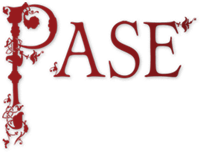Table of Contents
Top of page
Name
Summary
Distribution Map
Property List
Profile
Bibliography
Bottom of page
Fiacc 2
Fiacc ‘of Lincolnshire’, fl. 1066
Male
CPL
4 of 5
Name
Summary
Fiacc 2 held rights of sake and soke in Lincolnshire but may have been dead by 1066. His landed estate was not recorded.Distribution map of property and lordships associated with this name in DB
List of property and lordships associated with this name in DB
Holder 1066
| Shire | Phil. ref. | Vill | DB Spelling | Holder 1066 | Lord 1066 | Tenant-in-Chief 1086 | 1086 Subtenant | Fiscal Value | 1066 Value | 1086 Value | Conf. | Show on Map |
|---|---|---|---|---|---|---|---|---|---|---|---|---|
| Lincolnshire | T5 | - | Fyach | Fiacc 'of Lincolnshire' | - | - | - | 0.00 | 0.00 | 0.00 | A | Map |
| Totals | ||||||||||||
Profile
Fiacc (Fyach) appears in DB only among the list of those ‘who used to have rights of sake and soke and toll and team in Lincolnshire’ (qui habuerunt in Lincolescire sacam 7 socam, 7 Tol 7 Thiam). Uniquely among the thirty-five persons who had such rights, he is not found as the holder of any estates in the shire. That disjunction has been regarded by Roffe (1990: 12; 1992: 13) as meaning that Fiacc and the others had lordship rights over estates which were actually in the hands of the tenants whose names were recorded as TRE landholders. That possibility cannot be discounted, but as likely is the possibility that the list dated from some time before 1066, and that Fiacc had died in the meantime.The list of soke holders forms a distinct section of the Lincolnshire folios, written at the foot of the first column on folio 337v., after the accounts of the city of Lincoln, the borough of Stamford, and the small town of Torksey (fols 336r.–337v.) and before the index list of tenants-in-chief in the second column of folio 337v. The section is laid out and rubricated in exactly the same way as the rest of the Lincolnshire text, so was not a late addition to the manuscript, its cramped appearance being due simply to the extensive interlineation of titles and patronyms above the forenames. This list is the only information which DB provides about Lincolnshire as a whole TRE, and must have originated as a separate document which came to hand when DB was being compiled. It would benefit from closer scrutiny, since it is patently not straightforwardly ‘a list of the major T.R.E. landholders in Lincs.’ (as Phill. Lincs. note T 5).
A similar list of holders of sake and soke rights in two of the lathes of Kent (Kent D:25) likewise included the name of a person, Esbern of Chelsfield (Esbern 5), who does not appear as a landowner TRE, in all probability again because the list dates from before 1066 and he had died in the meantime. Pre-Conquest sheriffs may have thought it less pressing to keep such lists up to date than the documents which recorded the names of current landowners who owed the geld for particular holdings. Lists of sokeholders were certainly of far less interest to the compilers of DB in 1086, or more would have been copied into the manuscript.
Bibliography
Phill. Lincs.:Domesday Book, ed. John Morris, 31: Lincolnshire, ed. Philip Morgan and Caroline Thorn, 2 vols (Chichester: Phillimore, 1986)
Roffe 1990: D. R. Roffe, ‘An introduction to the Nottinghamshire Domesday’, The Nottinghamshire Domesday, [ed. Ann Williams and R. W. H. Erskine] (London: Alecto Historical Editions, 1990), 1–31
Roffe 1992: D. R. Roffe, ‘An introduction to the Lincolnshire Domesday’, The Lincolnshire Domesday, [ed. Ann Williams and G. H. Martin] (London: Alecto Historical Editions, 1992), 1–31
